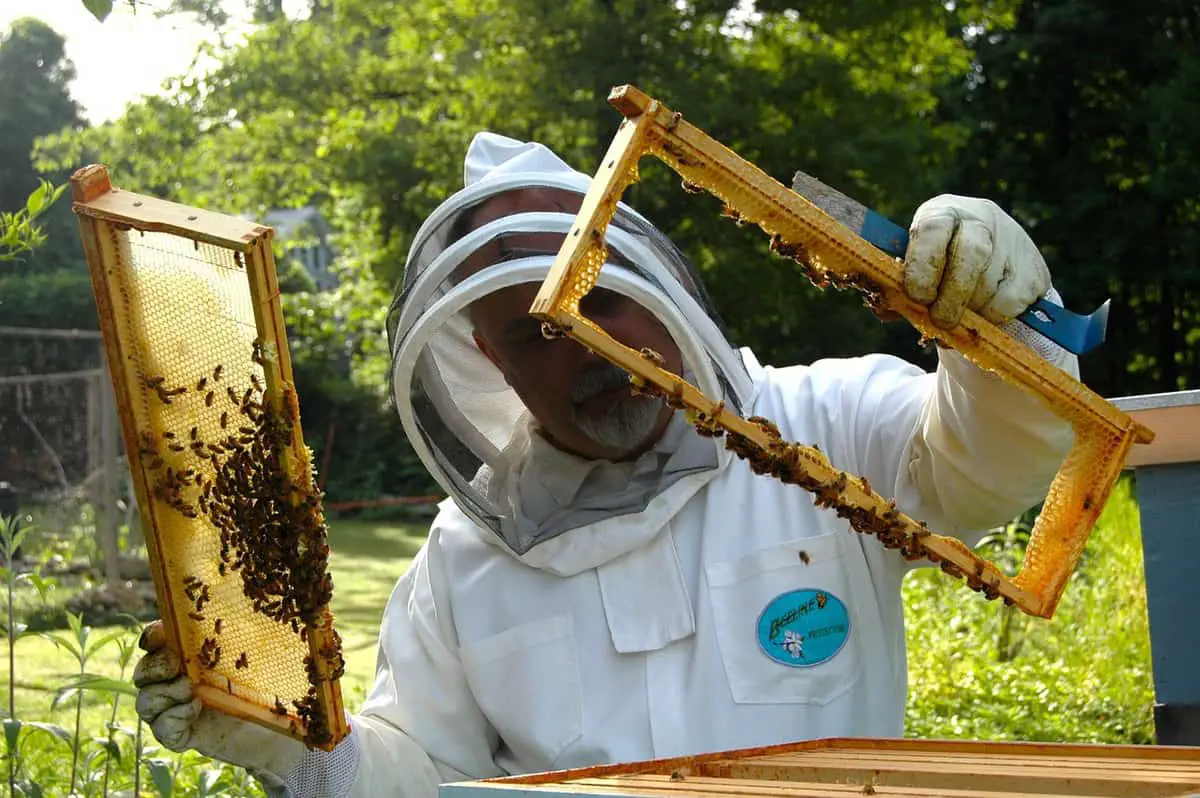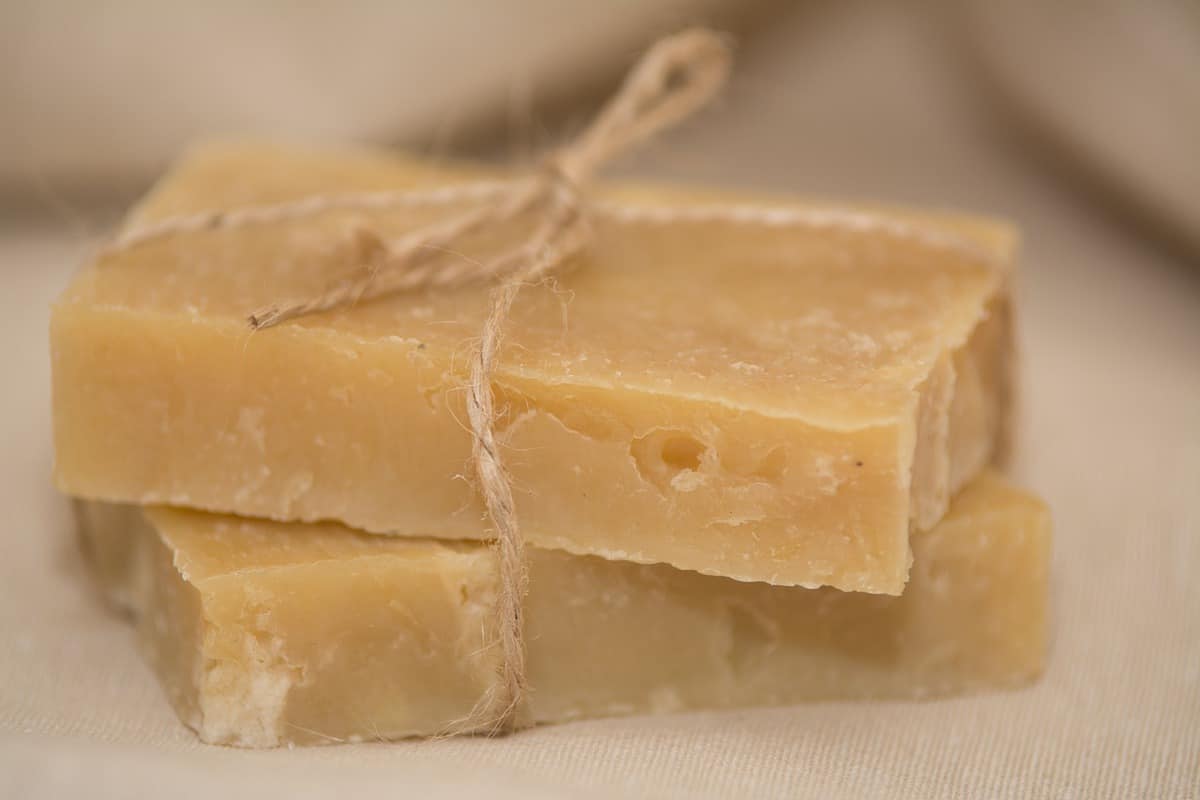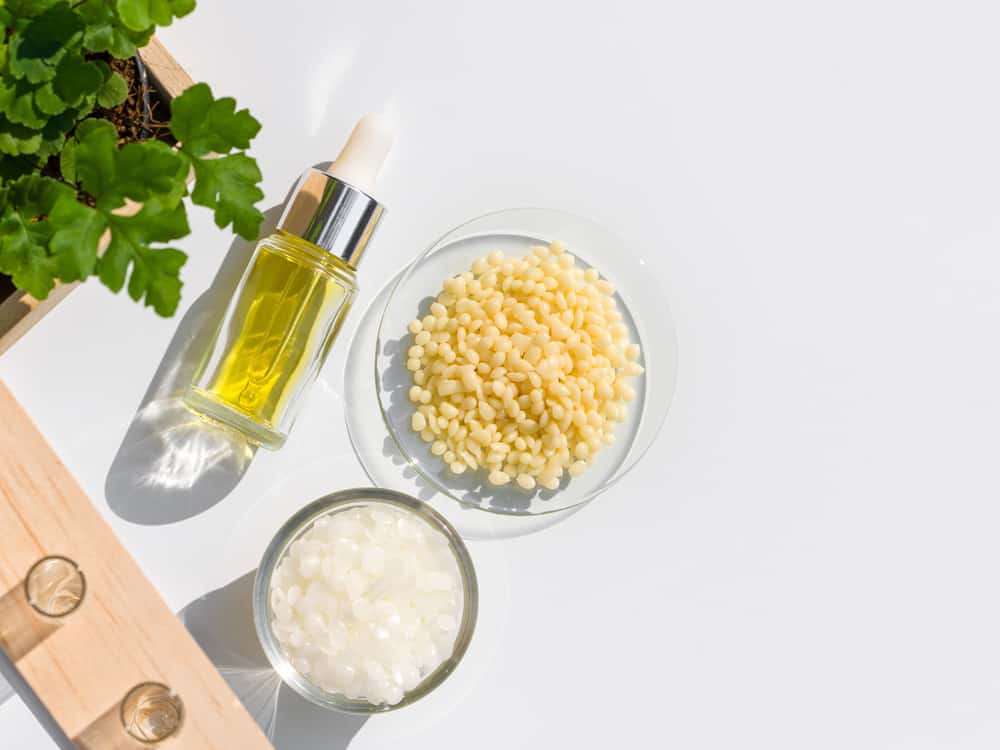Beeswax is an increasingly popular ingredient in your beauty products. All the nourishing benefits are written across the cosmetic bottles. So, it’s only natural to wonder where this beeswax comes from and if you’re using a cruelty-free product.
Beeswax can be cruelty-free, depending on the way that the honey and beeswax are extracted. When done correctly, this extraction process does not harm any bees. However, this process will vary depending on each honey farm's policies when performing the extraction.
Beeswax manufacturing is a complicated process. But there are a couple of key things you need to know if you want to support farms and organizations that make cruelty-free beeswax products.
How is Beeswax Obtained?
Worker bees start to produce beeswax from when they are about 12 days old, and it is used to build the honeycomb cell walls within beehives. This is a really intense process.
It’s estimated that bees consume about 8 pounds of honey and fly about 150 000 miles to make 1 pound of beeswax.
Unlike what you might think – beeswax is not bee poop! It’s actually extracted from their stomachs.
It also takes It takes quite a lot of combs to make a little bit of beeswax. Usually, the beeswax production you will see in hives is only about 1,5%-2% of its overall honey production.
In ethical farming, a beekeeper or farm factory will carefully relocate all the worker bees from the hive that is ready for extraction. It’s important to remember that beeswax comes from the bees’ homes, so they essentially need to be rehoused in a safe way before anything can happen.
The best practices involve caution to reduce the chances of harming the colony.
Because the honey comes within the honeycomb, it’s impossible to extract one without the other. Honey needs to be extracted in order for beeswax to be obtained too. They are then separated pretty soon after harvest.
What Does it Mean for Beeswax to be Cruelty-Free?
“Cruelty-free” means that the extraction process does not harm the bees or their homes. Beekeepers and manufacturers can be dangerous to bees when removing beeswax. This includes threats not only to their physical health but their mental health. Yes, we said it, mental health.
When a beekeeper removes and transports the colony, it can cause stress to the bees. Anything that disrupts their hive can cause this effect. If stress levels become too high, the bees may die or become sick and diseased.
Beekeepers must do the following, slowly and carefully, so they do not harm the bees:
This process doesn’t yield as much beeswax. But it does ensure that there is minimal harm to the bees and their hive.
As an alternative, beekeepers sometimes simply wait for a colony to leave a hive before collecting the abandoned honeycomb. This takes much longer, and beekeepers who use this process are not selling to manufacturers regularly.
If you are interested in seeing this process in action, take a look at this local beekeeper who manages to gently extract the honey and beeswax from her own bee colonies.
Why is it Beneficial to Opt for Cruelty-Free Beeswax?
When you choose cruelty-free beeswax, you are actually supporting the survival of honeybees. This is really awesome, not only because they are a vulnerable species but because without them, it threatens the survival of the plants that rely on honeybees for pollination.
By choosing cruelty-free beeswax, you are making a smart environmental choice. Here are some benefits to remember the next time you’re picking a cruelty-free beeswax product:
Your choice of cruelty-free beeswax tells larger companies that consumers care about honeybee treatment. This motivates manufacturers and farm factories to move towards a more sustainable and environmentally friendly production process.
We know that you might also be concerned about the cost of these products and how much more you will need to fork out for the cruelty-free and natural option. To find out how to save money when it comes to this, we have extensive information for you here: “Are Cruelty-Free Products More Expensive?”
How to Tell if a Product is Made From Cruelty-Free Beeswax?
There are many ways you can tell if a product is cruelty-free. Here is what you need to look at to make sure you are purchasing cruelty-free products.
Labels
First, you can look at the product label and see if it claims to be cruelty-free. Companies love to advertise if they are cruelty-free. It’s a selling point, and people love buying products that don’t harm living creatures.
More often than not, if a company uses cruelty-free beeswax, you can see it on the label.
Products offered by small companies and local vendors may not have such clear labeling. In such cases, inquire with the company regarding their extraction process. If you can’t get a clear answer, it may be time to move on to the next product.
Websites
If you are on a website that only sells the product but does not manufacture it, you can search the terms “cruelty-free beeswax.” This is a simple and easy way of finding cruelty-free beeswax products.
Next, check out the manufacturer’s website. They should have plenty of information about how they make their products. Companies claim cruelty-free like a medal of honor, similar to when companies announce that their product is organic. So, if a manufacturer is cruelty-free, they will likely try to make sure you know.
Most of the time, you can find your answer under the product information section. Just remember to check your labels carefully so that you know you are dealing with a genuine brand.
If you’re not sure what to look for, here’s a list to help you out: “What Cruelty-Free Logos Can You Trust in 2021?”
Manufacturer
If the manufacturer is a smaller company, your beeswax is more than likely to come from smaller beekeepers. These smaller groups are more likely to use a cruelty-free process compared to more extensive beekeeping operations. Beekeepers know the importance of their bees and will remove the beeswax properly.
Research
If you still can’t tell if your product is cruelty-free, you can research it further on a search engine. Make sure to use key terms to get the best results. Search for “cruelty-free beeswax”, the beekeeper’s name or the farm’s details. If you’re trying to figure out if a specific product is cruelty-free, your best bet is to look up that manufacturer or product.
Sadly, if the manufacturer does not advertise the product as cruelty-free, your product is not likely cruelty-free. Or, if you have to dig through pages of results, the chances of the product being cruelty-free are low.
The good news is that there are many cruelty-free alternatives you can look at – so do not despair just yet.
What Companies Offer Cruelty-Free Beeswax Products?
Many brands offer cruelty-free beeswax and it isn’t too difficult to find their products. If you want to save time as you search for cruelty-free beeswax, you can just research some of the great ones we mention below:
What Are Some Alternatives to Beeswax?
Beeswax has some great healing and moisturizing properties. This is why it has become increasingly popular in the beauty industry. If your choice is to use cruelty-free beeswax and can’t find the right product, there are many alternatives. Here are some options you can consider using instead of beeswax:
Any product you choose to use needs to be thought through. Your age, skin type, and overall health all affect the types of ingredients you should be looking for. If you’re looking for intense moisturizers, you can find out what suits your skin type here: “Can Lanolin Be Cruelty Free?”
So Can Beeswax Truly Be Cruelty-Free?
Beeswax can be cruelty-free. But remember, it is the source that truly counts. With smaller, local farms or beekeepers, you are more than likely to find a cruelty-free product. That is where bees live in the best conditions.
Take not that if the company isn’t bragging or advertising that their product is cruelty-free, it probably isn’t.



